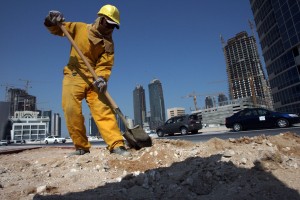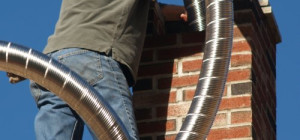 When people think of science, they often envision a white-coated engineer, sequestered in a lab somewhere with bubbling beakers of brightly-colored solutions. Nearby, an assistant scribbles down pages and pages of data–all of it meaningless to the average person.
When people think of science, they often envision a white-coated engineer, sequestered in a lab somewhere with bubbling beakers of brightly-colored solutions. Nearby, an assistant scribbles down pages and pages of data–all of it meaningless to the average person.
But science is a far more hands-on field than that. The truth is that a lot of science takes place outdoors in the fields, cities, oceans, and highways of the world. And the information gleaned from that work is used right there where it’s developed.
Construction is a good example. We think of construction as a trial-and-error field, since that’s mostly how our ancestors did it. Of course, our ancestors also built the Leaning Tower of Pisa, so there must have been a lot they didn’t know.
In centuries gone by, the innovators of architecture and science could only go so far with what they knew. Beyond that, they had to hope for the best. That knowledge gap is being filled by science, and the result is better, stronger buildings. Let’s look at how science is helping the construction industry.
Material Development
There’s so much more involved in construction materials than simply cutting trees and making two-by-fours. Buildings today feature countless natural and manufactured materials, both of which require extensive scientific knowledge for production.
For example, steel has evolved dramatically since its earliest refinement and use. The improvements in mining the ore and making it into a better steel than ever have helped metal building cost per square footto remain competitive with wood-frame building cost per square foot. It’s a better product at a better price.
In terms of natural material, the popularity of features like granite countertops has necessitated a better understanding of where the appropriate stone can be found, how to harvest it, and what to do for optimum appearance and durability. The ability to develop this knowledge before hiring a large crew and buying an expensive machine helps to reduce costs and increase quality.
Structural Design
When your great-grandfather built his little cabin, he didn’t engineer it to allow for certain wind velocities or snowfall amounts. He just cut the biggest logs he could handle and carefully carved them to fit together firmly. In other words, he built it as strong and heavy as he knew how, then hoped it was enough.
This is no longer necessary. Everything from furniture to cars to buildings is now so thoroughly engineered that it can be built with optimum design and minimum materials. We know which structural components should be what size, and which materials are best for those components. Eventually, the computers themselves may do the construction!
Technology today can take into account the soil types, wind speeds, precipitation forms, and even seismic characteristics of an area to help architects and engineers design the buildings for optimum durability and safety. By building things smarter instead of stronger, we make better buildings that conserve energy and materials, helping the environment and the consumer simultaneously.
The Finishing Touches
When all is said and done, most homes are still held up by wooden studs and steel nails. But the finish materials have evolved dramatically. Old materials and methods that seemed fine at one time have now been deemed dangerous, all thanks to scientific research.
For decades, most paint contained lead, and many people were exposed to excessive levels of the metal, to the point of having health problems. Asbestos was another problem. It was a great insulation material that was later found to cause cancer. Older mobile homes utilized fragile aluminum wiring that could crack and cause fires. The old screw-type fuses were replaced by safer breakers.
The idea here is that many of the things that were industry standards were found–by science–to be unsafe, and their replacements–developed by science–have been brought into use and improved the safety of homes.
Science has played a big role in the improvement of construction techniques. Laboratory work may not seem to share much with hammers and nails, but without that lab with the studious scientist and meticulous assistant, many of these improvements would have never been made to our homes, workplaces, and businesses.







